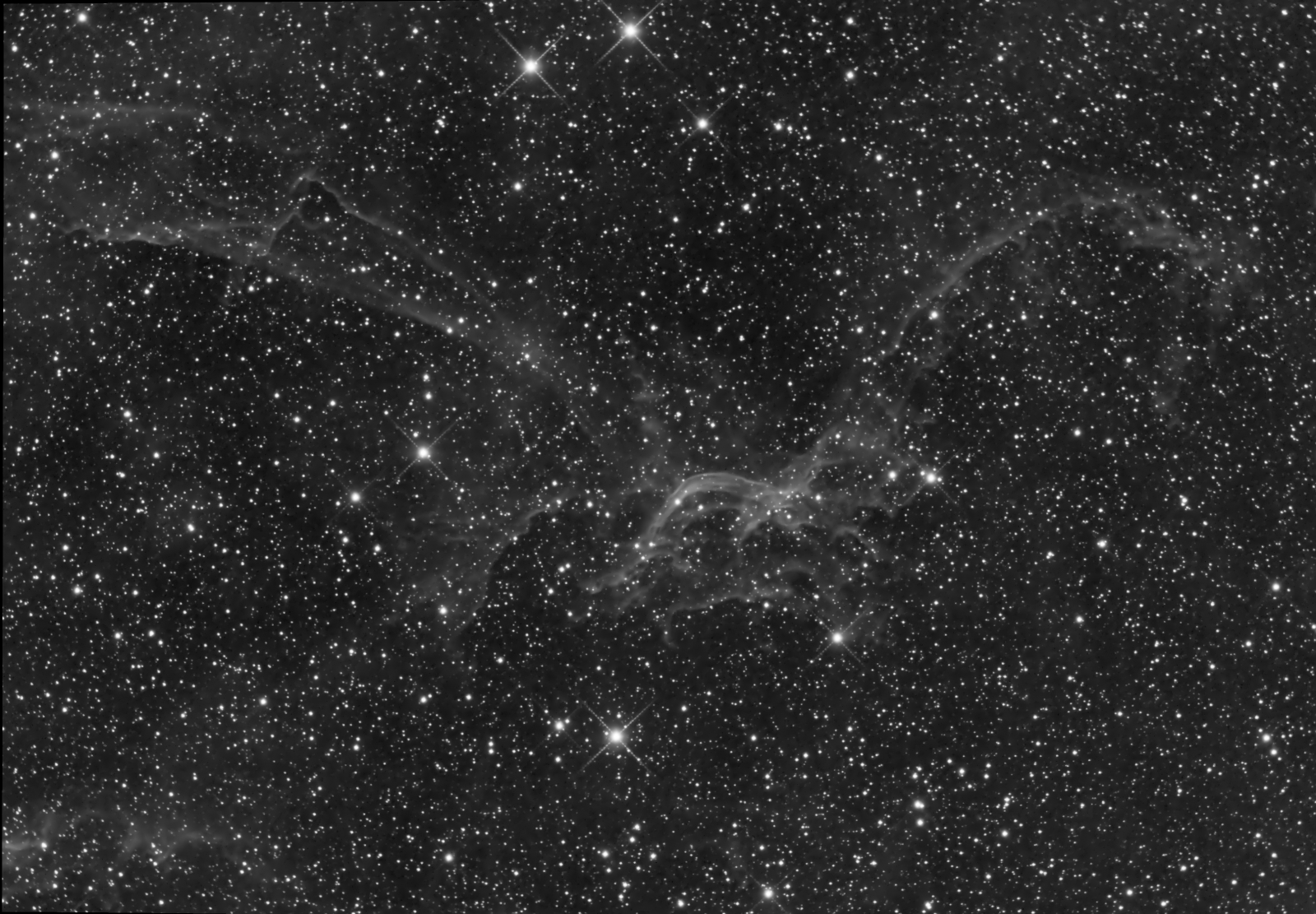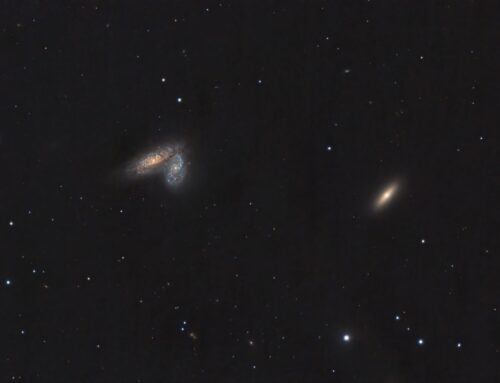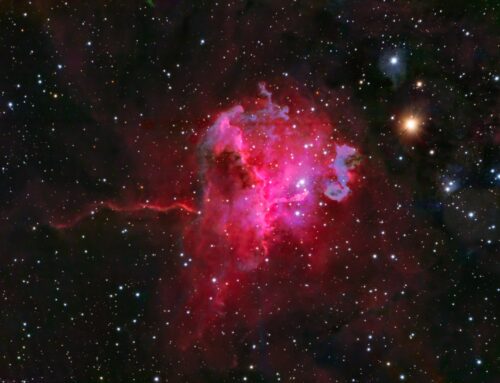Sh2-114 The Flying Dragon Nebula (H-alpha)
Click image for full size version
August 25, 2014
For the last three weeks, I have spent every chance I had to image this faint Sharpless nebula. I think it is the faintest object I have ever imaged. When I first found it in a catalogue I was intrigued by the fine structure in the centre, as well as the outer wings. Together the whole scene reminded me of a dragon in flight, tail swooping down to the left and wings outstretched upwards. Then I researched it further and discovered it’s nickname is the Flying Dragon Nebula! As with some other faint Sharpless nebulae, I haven’t been able to find much information about its distance, size, age or how it was formed. I did read that the strands in the centre are similar to those in supernovae remnants, but this object doesn’t seem to have been formed by a supernova (I haven’t found any suggestion to that effect anyhow). This object is in the Cygnus Milky Way, which is why there are so many stars scattered throughout the field.
In addition to this H-alpha version, I produced a colour image of this object.
Tekkies:
Acquisition in Maxim DL. All pre-processing and processing in PixInsight. Acquired from my SkyShed in Guelph, ON. SBIG STL-11000 with Baader HaRGB filters. 10″ ASA @ f/6.8 on a Paramount MX. Guiding with SV-80 80 mm f/6 refractor and camera’s Remote Guide Head. Imaging runs were scripted using CCDCommander. Gibbous to full moon, with excellent transparency and seeing.
60x10m Ha (total – 10hr)
The batch pre-processing script was used to calibrate, register and combine the frames. The master frame was processed with DBE, LinearMultiscaleTransform (to reduce noise prior to stretching), HistogramTransformation, ACDNR (small scale), another HistogramTransformation, and ACDNR (large scale on only the darkest areas of the image). A slight curve was applied to the entire image to increase brightness and contrast. Image scale is 1.1 arcsec/pixel.







Leave A Comment